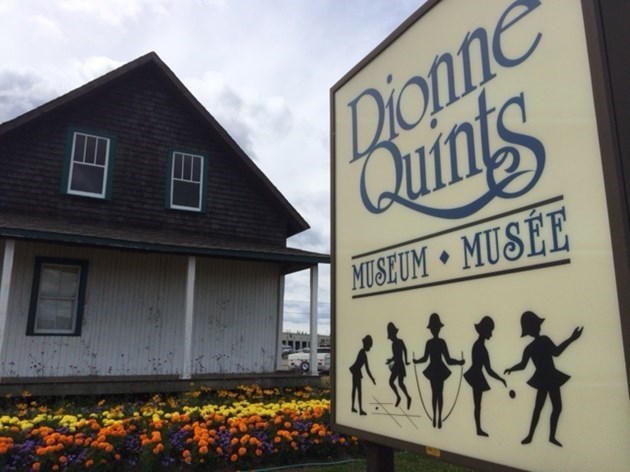The Dionne quintuplets’ childhood home will stay in North Bay after city council did an about face during its April 3 council meeting, voting 7-3 in favour of keeping the attraction.
Debate had been ongoing about whether or not to keep the tourist attraction in the city. When the North Bay & District Chamber of Commerce relocated to the city’s downtown core in 2015, it simultaneously ceased operation of the home and North Bay’s Regional Tourist Information Centre.
The city decided to relocate the museum — the original farmhouse in which the Dionne quintuplets were born in 1934 — so the valuable land on which it’s situated could be redeveloped.
The property was purchased in February by Grant Castle Corp., located in Maxville, Ont., east of Ottawa, for $1.68 million. The value of the land, located at the corner of Seymour Street and the Highway 11/17 bypass — a major North Bay intersection — had originally been estimated at just under $1 million.
Council revealed that Grant Castle plans to develop a service station and car wash on the site, and potentially a restaurant.
A stipulation of the sale indicates the home must be removed from the property by June 1. Should development not proceed along the timeline outlined in the agreement, ownership of the property would revert to the city.
A committee report proposes that the City of North Bay retain ownership and jurisdiction of the Dionne Quints’ Museum, all museum artifacts, contents and related items, and that the City of North Bay locates the Dionne Quints Museum at the North Bay waterfront park, near the North Bay Museum.
For years, the house was a key tourist attraction, but figures show attendance at the museum dropped from 15,000 visitors in 1987 to just 3,000 in 2015. The Chamber had run a deficit for several years to keep it open.
There has also been a history of exploitation associated with the Dionne quintuplets — Yvonne, Annette, Cécile, Émilie and Marie — since their birth captured the world’s attention.
The sisters were removed from their parents’ care at four months old and made wards of the state. They were returned to their family’s care nine years later, but only after the province, and even their own family, made millions of dollars from putting the girls on display to a curious public.
Public outcry followed after it was revealed the city planned to divest itself of the home, even sparking a response from the two remaining sisters, Annette and Cécile, which reached international headlines.
The sisters and the museum’s advocates argue that the home should remain open as a cautionary reminder of the dangers of child exploitation.




